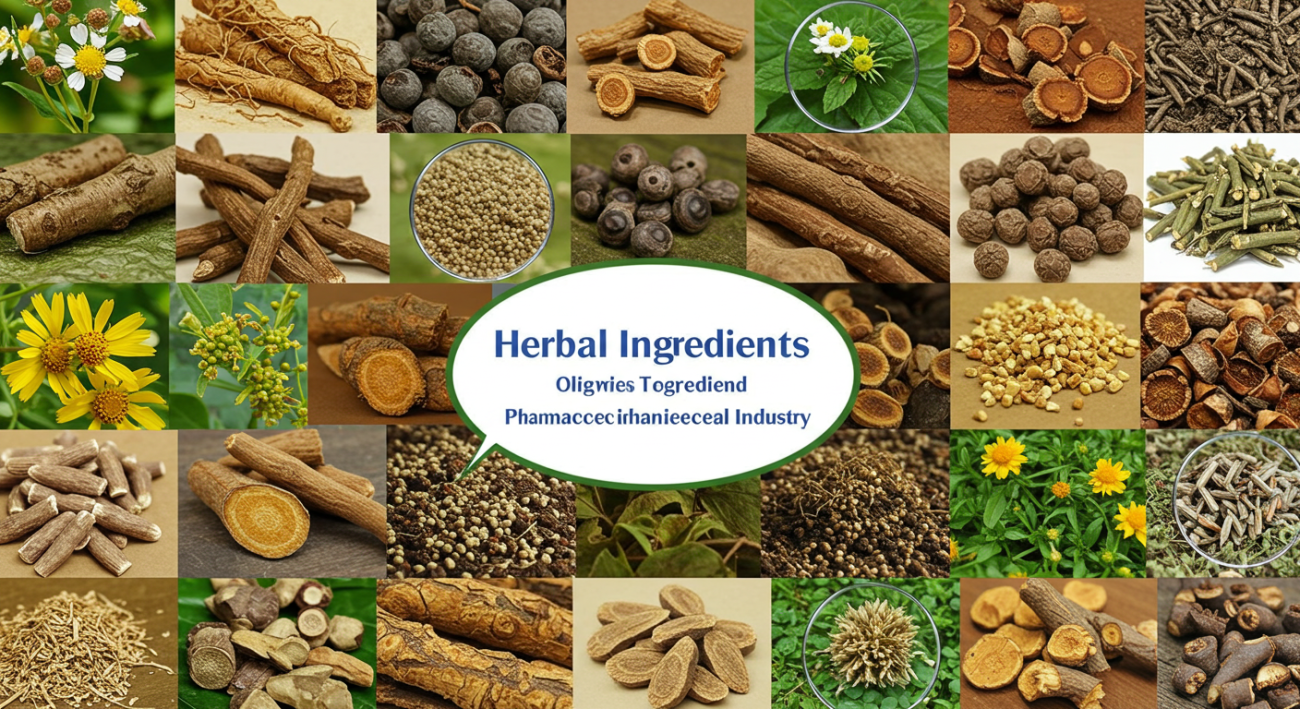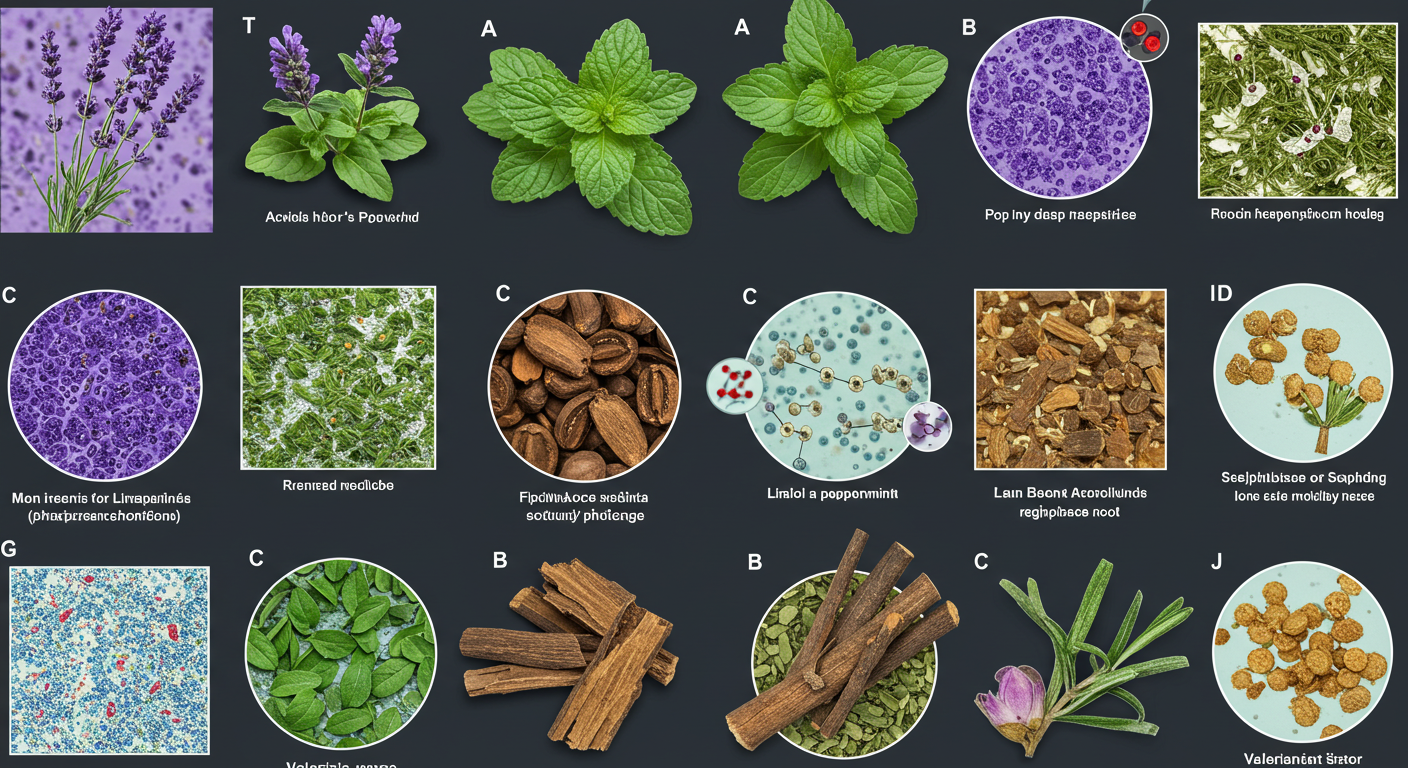Unleashing the Power of Active Herbal Ingredients in Health Care
- The pharmaceutical industry is dynamic and aims at more effective, safe, and sustainable solutions to human health. Although synthetic drugs are taking over in modern medicine, there is increased awareness of active herbal ingredients therapeutic potential in pharmaceuticals. These are medicinal-plant-derived compounds, not only abundant in bioactive molecules, but also provide centuries of traditional knowledge to back their application.
- Plant-derived compounds are being investigated and incorporated into drug formulations across therapeutic fields; as herbal active pharmaceutical ingredients (Herbal APIs), all the way to standardized extracts. As the market is increasingly stressed by the necessity of more natural active ingredients in medicine, phytochemicals in pharmaceuticals are gaining popularity, occupying the space between tradition and the state of the art.
How are Active Herbal Ingredients to Pharmaceuticals?
Bioactive molecules present in medicinal plants that have therapeutic effects are active herbal ingredients. In contrast to raw herbs, these compounds are separated, standardized, and evaluated as pharmaceutical agents. They include:
- Alkaloids- The nitrogenous substances of great pharmacological effect (e.g., morphine, atropine).
- Flavonoids- Plant pigments and antioxidants, and anti-inflammatories.
- Terpenoids- Aromatic compounds whose therapeutic effects are extensive, including anti-cancer, antimicrobial.
- Glycosides- Compounds that may aid the work of the heart and other organs.
- Saponins/Polyphenols- Compounds that are produced by plants; they are antioxidants, immune modulators, and protective.
These Active herbal ingredients for pharmaceuticals of plant origin are critical, not only in the past with the use of traditional remedies, but also in the contemporary drug development pipeline.
Significance of Standardized Herbal Active Ingredients
Herbal medicines have one of the limitations in variation in composition. Soil, climate, and harvesting conditions are the factors that can adjust the active molecule concentration in plants. To counter this, the pharmaceutical sector is based on standardized herbal active ingredients. Standardization ensures:
- Stable Potency- Every batch has the same therapeutic efficacy.
- Specific Dose- Decreasing the risk of under- or overdose.
- Clinical Validation- Simpler trials in testing.
- Safety/Regulatory Compliance- Achieving standards of the global pharma industry.
As an illustrative example, standardized licorice extract is made by defining the content of glycyrrhizin in the extract (eg, 20 percent), and Ginkgo biloba extract standardized by 24 percent flavone glycosides and 6 percent terpene lactones ensures consistent outcomes when used in the brain and vascular support.
Herbal Bioactive Compounds Pharmaceutical Categories
- Alkaloid in Pharmaceuticals
Among the strongest plant compounds are the alkaloids. They are quinine (anti-malaria), morphine (pain-killer), and vincristine (chemotherapeutic drug). Such molecules have influenced whole branches of medicine.
- Flavonoids in Drug Development
Quercetin and rutin are flavonoids under investigation as antioxidants and anti-inflammatory agents. They have an impact on cardiovascular support, cancer prevention, and neuroprotection.
- Terpenoids and Pharmacological Usage
Antimalarial treatments are essential to terpenoids like artemisinin (Artemisia annua). Others, such as carotenoids, are beneficial to the eyes and the immune system.
- Medicinal Plants Glycosides
The cardiac glycosides, such as digoxin of Digitalis species, continue to serve as the heart failure management central agents.
- Saponins and Polyphenols
These substances enhance the immune response, reduce cholesterol, and offer a high level of antioxidant protection, and so they are essential to preventive medicine.

Medical Uses of Herbal Active Components
- Digestive and Liver Health
The herbal APIs such as glycyrrhizin in licorice and silymarin in milk thistle assist in liver detoxification and gastric repair.
- Cardiovascular Support
Flavonoids and polyphenols are cardioprotective phytonutrients that enhance blood circulation, lower cholesterol, and improve vascular health.
- Brain/Nervous System Support
Ginkgo biloba standardized extracts are commonly used as cognitive-enhancing and neuroprotective agents. The adaptogenic effects of Herbal products such as Ashwagandha assist in alleviating stress.
- Immune/Anti-Inflammatory Effects
The plant-based Echinacea glycyrrhizin, curcumin, and echinacosides have high anti-inflammatory and antiviral effects and are immune boosters.
Herbal Medicine and Clinical Studies, and Evidence-Based Medicine
Current medicine is based on clinical confirmation of herbal compounds. Research highlights:
- Curcumin (turmeric)- Several studies demonstrate its use in the treatment of inflammation and joints.
- Glycyrrhizin (licorice)- Has been researched as an antiviral, particularly in respiratory infections.
- EGb 761 (Ginkgo biloba extract)- Its use in dementia, memory, and circulation has clinical trial support.
Pharmaceutical Manufacturing and Regulatory Standards
Herbal APIs have to be pharmacopoeial in their application in drug formulations. Guidelines cover:
- Purity & potency testing
- Toxicology and safety profiles
- Good Manufacturing Practices (GMP)
Business Tendencies in Herbal Active Ingredients
There is a rapid increase in the demand for plant-derived Active herbal ingredients for pharmaceuticals all over the world because of:
- Increasing popularity of natural remedies.
- Increasing markets in nutraceuticals and supplements.
- Pharmaceutical firms that investigate a plant-based drug formulation.
- Increase in the level of interest in holistic and integrative medicine.
The future of pharma is being defined by companies that source bulk herbal extracts to the pharmaceutical industry and organic standardized herbal actives. To the market, reputable suppliers such as BioBThriving.
Pharmaceuticals: Future of Active Herbal Ingredients
- The integration of traditional knowledge and modern science will occur in the coming decade. The development of nanotechnology, bioavailability enhancers, and phytotransformation methods of isolating phytotransformation of herbal actives will broaden the therapeutic range.
- Drug discovery will speed up the discovery of new plant-based compounds, and personalized medicine will be used to design herbal preparations based on genetic and metabolic phenotype.
Conclusion
Active herbal ingredients for pharmaceuticals are the future of medicine- a gorgeous blend of the wisdom of nature and science. It is changing the way we deal with healthcare with the help of standardized extracts, clinical evidence, and robust regulatory frameworks. Plant-derived active compounds provide safe, sustainable, and effective therapeutic solutions, whether in cardiovascular protection, neuroprotection, liver detoxification, or immune support. To individuals interested in certified herbal pharmaceutical ingredients, trusted associates such as B-Thriving.

